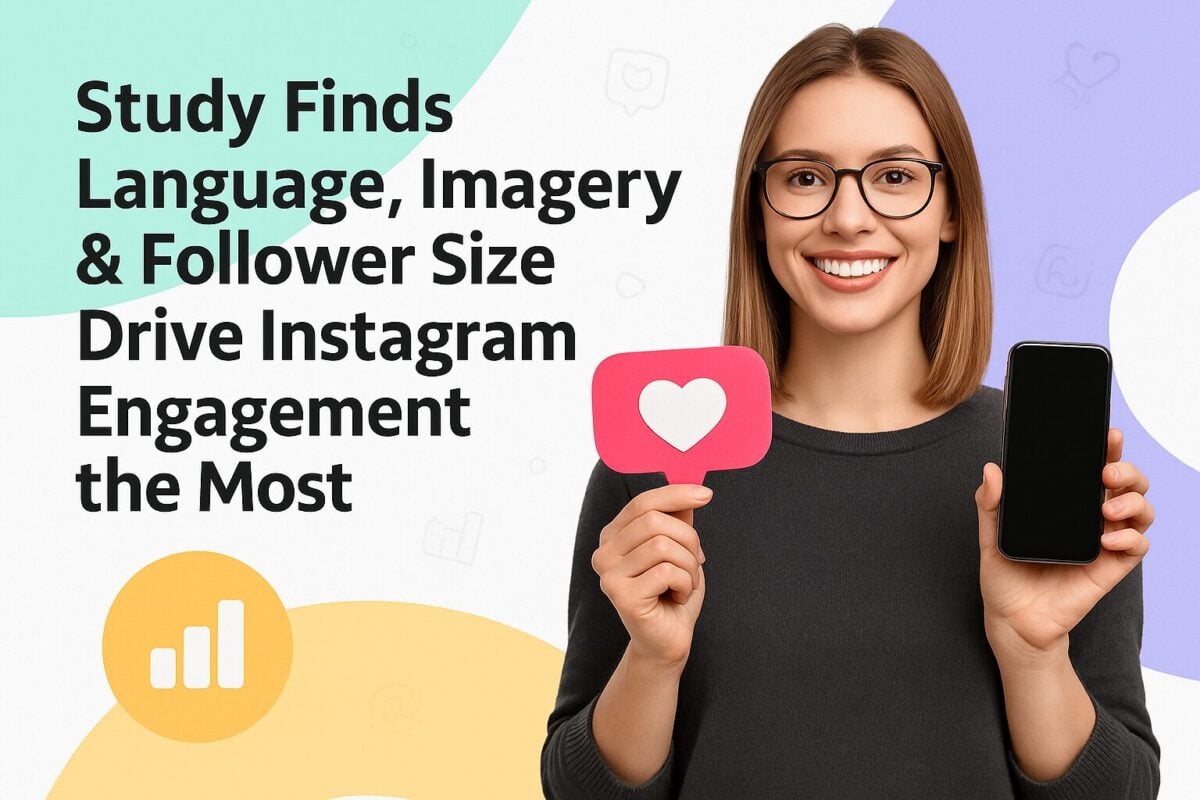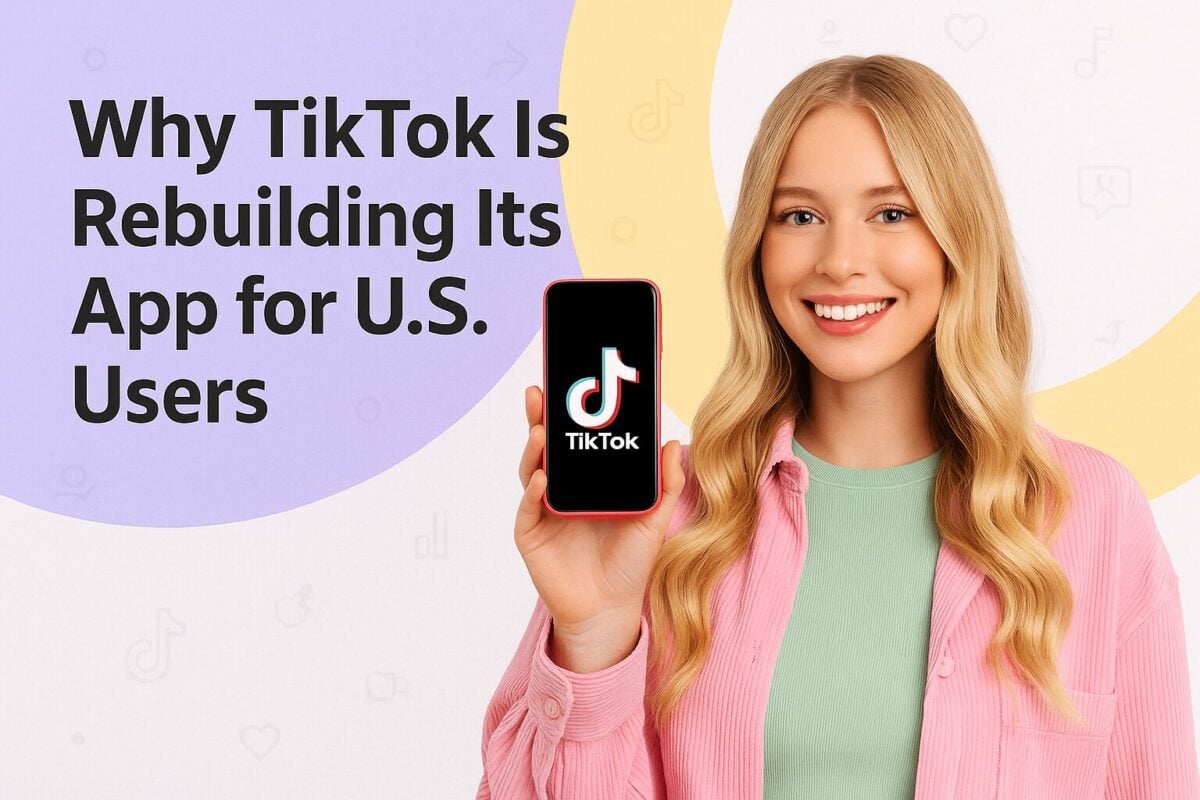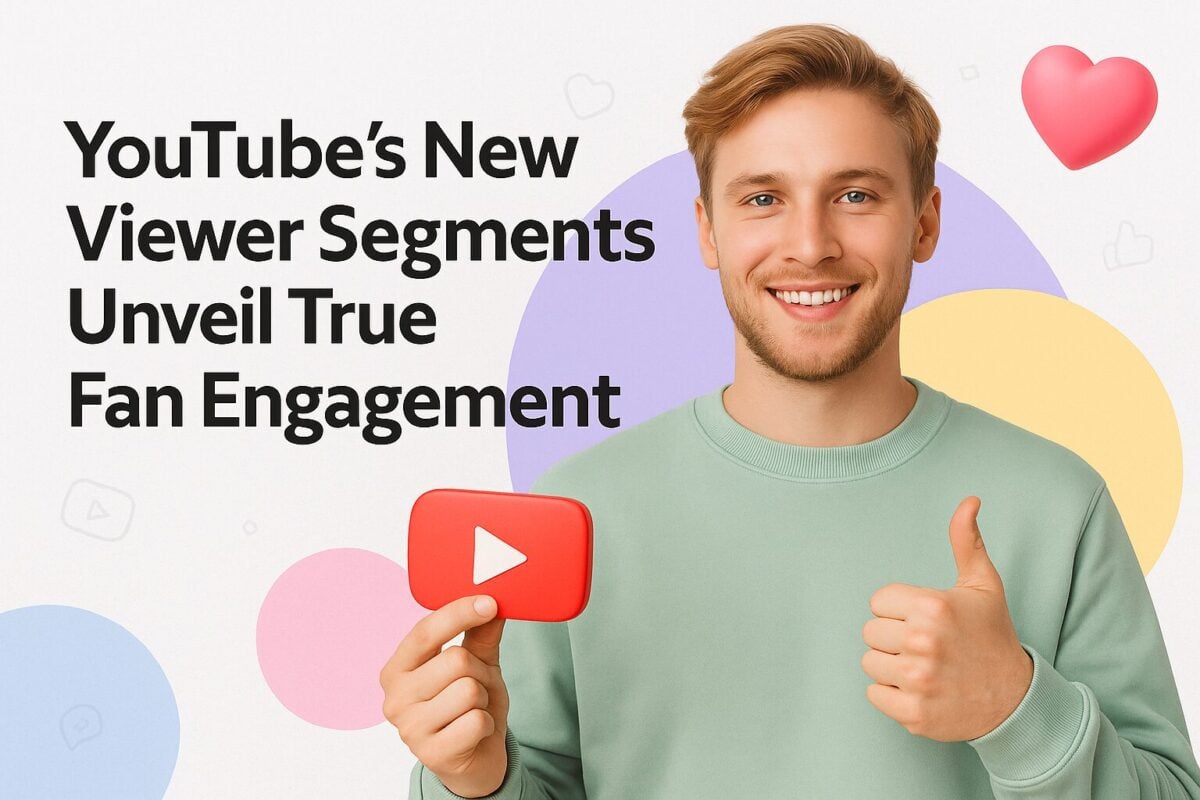The medical device market is on a rocket ride to the future — in 2023, it was worth around $518 billion, and by 2032, it’s projected to nearly double. Along for the ride? Social media marketing, which is growing faster than a viral TikTok dance, with the healthcare sector expected to reach over $2.9 billion by 2031.
And let’s face it: when your audience is both patients and professionals, creating the right digital buzz is key.
Enter the strategic shift in how medical device companies are using social media. Platforms like LinkedIn and Twitter are the powerhouses for B2B engagement, while B2C brands are making waves on Instagram and Pinterest.
The goal? To educate, inspire, and build trust. But it's not just about flashy posts — it’s about making content that resonates, whether through patient success stories, influencer partnerships, or the occasional behind-the-scenes look at groundbreaking innovations.
So let's go over the top medical devices and services companies using social media marketing campaigns to gain the much-needed visibility to thrive and grow.
- 1. #YESMAMM – Carilion Clinic's Social Media Triumph in Breast Cancer Awareness
- 2. Rest Easy with Dexcom: A Campaign That Knows Diabetes Isn't Just About the Numbers
- 3. Innovating in the Medical Space: EMS’s Social Media Masterclass
- 4. The Blue Balloon Challenge: Medtronic's Viral Awareness Campaign that Took Flight
- 5. UnitedHealthcare's 'We Dare You': Turning Health Challenges into Social Media Wins
- 6. #MedtronicChampion: A Social Media Campaign that Gave Diabetes a Voice
- Unleashing the Power of Social Media in Medical Devices
1. #YESMAMM – Carilion Clinic's Social Media Triumph in Breast Cancer Awareness
Carilion Clinic's #YESMAMM campaign didn’t just raise awareness about breast cancer; it rewrote the playbook for social media-driven health initiatives. Launched in the Roanoke Valley, Virginia, the campaign struck a perfect balance between emotional resonance and strategic execution.
Through Facebook, Instagram, and Twitter, Carilion Clinic created a digital ecosystem where women were empowered to take control of their health — specifically by prioritizing mammograms. And the results? Simply impressive.
Strategic Approach: The Power of Empathy and Engagement
The #YESMAMM campaign was crafted with one main goal: to shift the needle on breast cancer awareness and early detection through mammograms. But it wasn’t just about flashing statistics or lecturing on the importance of screenings. Carilion Clinic’s internal marketing team, with input from healthcare experts like SMO Nawed, smartly leveraged the emotional pull of personal stories.
This approach reduced the barriers that often prevent women from getting screened — fear, stigma, and confusion.
By focusing on community-building, the campaign made breast cancer awareness personal and, most importantly, accessible. They weren’t just talking about mammograms; they were creating a space for women to share their experiences, and that was the magic that made it go viral.
Key Tools: From Social Media to Supportive Communities
Facebook, Instagram, and Twitter were the campaign’s main weapons of choice, and they were wielded brilliantly. Carilion Clinic also created a dedicated landing page to complement the social media outreach.
This multi-platform approach created a seamless journey from awareness to action. The consistent use of the #YESMAMM hashtag turned every post into a ripple effect, as women and influencers shared their stories and tagged others to join the conversation.
Influencers played a crucial role. Instead of celebrity endorsements, it was community leaders and real people sharing authentic, relatable stories that gave the campaign its pulse. This authenticity made the campaign feel less like a health PSA and more like a grassroots movement.
2. Rest Easy with Dexcom: A Campaign That Knows Diabetes Isn't Just About the Numbers
When it comes to marketing medical devices, it’s not just about selling a product – it’s about selling peace of mind. Enter the Dexcom G6 Campaign by The Fuel Agency, which did just that by focusing on the emotional and physical burdens of managing type-1 diabetes, while positioning the Dexcom G6 Continuous Glucose Monitoring (CGM) System as the solution.
And let's be real: in a crowded market, it's not enough to just show off a product’s features. You need to make it resonate.
@jennii.type1 Once again 🤍 #dexcom #fyp #type1diabetes #T1D #autoimmunedisease #sensor #cgm #diabetes #continousglucosemonitor #dexcomg6 #fail #again ♬ Unwritten - Natasha Bedingfield
Strategic Brilliance: A Holistic Approach
The campaign's strategy was as sharp as a lancet needle. Instead of just flaunting the Dexcom G6 as another tech gadget, it empathetically honed in on the mental load of living with diabetes. For people managing blood glucose levels, it’s not just the physical challenge – it’s the constant vigilance.
So, the Dexcom G6 was marketed as the lifeline that lets users "rest easy," helping them shift from worry to freedom. This messaging was a masterclass in empathy and strategy, aimed directly at individuals living with type-1 diabetes and their caregivers.
Content That Resonated: Real Life, Real Solutions
The content was designed to hit home with its audience. Think of morning routines, meal decisions, and bedtime rituals — the kind of relatable daily scenarios that are all too familiar for anyone managing diabetes. By showcasing how the Dexcom G6 fits seamlessly into these moments, it wasn’t just selling a device; it was selling a lifestyle upgrade. This human-centric approach wasn’t just a campaign; it was a conversation.
In the end, the Dexcom G6 Campaign didn’t just reach its audience – it touched them. And in an industry where trust is the ultimate currency, that’s a win.
3. Innovating in the Medical Space: EMS’s Social Media Masterclass
When EMS, a Swiss medical device company, launched their August 2020 campaign, they weren’t just rolling out new products—they were orchestrating a symphony of educational content, community-building, and digital savvy. With a multi-country push across Europe, EMS and their agency partner, Brandmed, crafted a strategy that didn’t just aim for awareness, but for deep engagement with medical specialists, distributors, and the general public.
The result? A 300,000-strong social media reach every month and a 20% increase in website traffic month-over-month—just the kind of numbers you'd expect from a savvy influencer campaign, but with medical professionals as the stars.
Strategic Approach: A Balancing Act of Education and Promotion
The campaign’s secret sauce was its balance. The strategy wasn’t just about getting eyes on EMS’s new medical devices; it was about educating the audience—medical specialists and distributors alike—about pain therapy, rehabilitation, and urology solutions. Here’s a quick rundown of the major strategies that got them there:
- A hybrid content approach: educational eBooks, engaging webinars, newsletters, and social media posts.
- A social media channel makeover: platforms like Instagram, LinkedIn, Facebook, and Twitter saw targeted content that attracted a new audience, especially in seven European countries.
- Case studies and testimonials: From market evaluators—medical professionals using EMS products in their practices—replacing traditional influencers to build trust.
By focusing on educating their audience while promoting their products, EMS hit the sweet spot between helpful content and direct sales strategies.
A Social Media-Driven Success Story
It’s no surprise that social media was the heartbeat of this campaign. With platforms like Instagram gaining traction (from scratch, no less!), EMS found itself with new avenues to promote their devices, moving beyond traditional medical advertising into digital-first spaces. Facebook, Twitter, and LinkedIn were put to work with valuable case studies, eBooks, and product showcases, building a strong following among medical professionals. And, much like an influencer post that gets everyone talking, these efforts created a buzz that skyrocketed engagement.
The campaign’s ROI wasn’t just about dollars—it was in the quality of engagement. Over 300,000 people reached each month, a steady flow of eBook downloads, and a growing community of medical professionals conversing and sharing insights. This isn't just reach—it’s a movement.
4. The Blue Balloon Challenge: Medtronic's Viral Awareness Campaign that Took Flight
Medtronic’s Blue Balloon Challenge soared to new heights in 2021, deftly blending social media savvy with heartfelt advocacy for individuals living with type 1 diabetes (T1D). The metaphor of keeping a balloon afloat as a symbol of the delicate balance required for diabetes management struck a chord with millions.
This wasn’t just a campaign — it was a powerful, crowd-sourced narrative that turned a health challenge into a social movement. Let’s break down what made it tick.
Strategic Execution That Hit the Right Notes
From the outset, Medtronic’s approach was refreshingly simple and deeply relatable. Participants filmed themselves performing everyday tasks while juggling a blue balloon, then shared their videos across social platforms using the hashtag #BlueBalloonChallenge. This hands-on approach encouraged real, authentic participation and fostered empathy for those navigating the complexities of T1D. It wasn’t about flashy ads — it was about everyday people, influencers, and caregivers coming together to create a digital mosaic of shared experiences.
Key Strategic Points:
- Target Audience: Aimed at individuals with T1D, caregivers, and the broader public, the campaign sought to raise awareness and foster empathy.
- Platform Use: Instagram, Facebook, and TikTok served as the primary platforms, each leveraging tailored tools like a custom Instagram filter to keep content unified and engaging.
- Influencers: By teaming up with figures like actress Jennifer Stone and former NFL player Kyle Rudolph, Medtronic broadened the campaign’s reach. These influencers brought their credibility and visibility to a campaign that needed a human touch, not just celebrity endorsements.
The #BlueBalloonChallenge hit a sweet spot with its blend of personal storytelling and social media engagement. In an era where memes and viral challenges often dominate feeds, Medtronic leveraged these dynamics to put diabetes management front and center, making it not just relatable but actionable.
The use of influencers wasn’t about a typical brand endorsement, but about humanizing a cause. These were real people sharing real struggles, which encouraged an open dialogue.
Engagement levels skyrocketed as participants shared their videos, and with each post, Medtronic committed to donating $5 to diabetes-related organizations like Life for a Child. The challenge not only educated the public about T1D but also directly contributed to the cause.
5. UnitedHealthcare's 'We Dare You': Turning Health Challenges into Social Media Wins
In 2014, UnitedHealthcare launched the “We Dare You” campaign, a pioneering initiative that merged health with social media in a way that not only challenged participants but also rewarded them for their efforts.
By blending monthly health challenges with the power of social sharing, UnitedHealthcare cleverly created a buzz that resonated deeply with its target audience, all while promoting healthier lifestyle choices. And let’s face it—who doesn’t love a challenge that comes with a reward?
Strategic Approach: Health, Habits, and Hashtags
Developed by Cleveland-based Zig Marketing, the campaign's strategy was as simple as it was effective: issue a monthly health dare, get people involved, and leverage social media to keep the momentum going. The campaign’s genius lay in its ability to seamlessly integrate interactive elements, such as quizzes and health tips while fostering a sense of community among participants.
As any marketer knows, getting people to engage and share is the holy grail—and UnitedHealthcare did just that.
Influencers: The Unsung Heroes of Health
While the campaign didn’t have a roster of celebrity influencers, it relied heavily on influential bloggers within the health, wellness, and fitness spaces. These influencers helped amplify the campaign’s message, making it feel both authentic and relatable.
Content that took off included personal success stories and transformation photos, which flooded social media, showcasing real people completing real challenges. It was like the health version of your Instagram feed, but with fewer avocado toasts and more planks.
Tools, Platforms, and The Social Media Spin
A dedicated microsite was launched to house all the monthly challenges, which participants could track and share. But it didn’t stop there—social media platforms like Facebook, Instagram, Pinterest, and Twitter were the real engines driving this campaign. The strategic use of these platforms not only made the campaign interactive but also turned every shared success story into a viral moment.
Participants didn’t just engage with the brand—they became ambassadors for it, organically spreading the message.
6. #MedtronicChampion: A Social Media Campaign that Gave Diabetes a Voice
When it comes to healthcare, marketing isn’t just about products—it’s about people. And that’s exactly what the #MedtronicChampion campaign nailed, delivering a powerful blend of storytelling and social engagement that turned the Medtronic brand into a true community builder.
The Strategic Game Plan:
The campaign, masterminded by the creative minds at Praytell, wasn’t just about pushing a brand; it was about reuniting and amplifying voices within the global diabetes community. The strategy? Simple but profound: share personal stories, foster emotional connections, and make everyone feel like part of a larger movement.
Through emotive storytelling, Medtronic invited real people, not celebrities or influencers, to step into the spotlight and become the faces of their own movement. The result? A genuine, human-centered campaign that created a sense of belonging in a digital world often saturated with noise.
Execution Like a Pro:
Praytell’s brilliance was in the details. A three-part video series launched on Instagram (because where else would you go for that kind of engagement?) resonated deeply with the target audience—people living with diabetes, caregivers, and healthcare professionals.
These weren’t just any videos. Each piece tackled vital themes like personal definitions of "championing" and collective empowerment, and their success was crystal clear with over 1.2 million views on Instagram alone. The videos did more than inform—they sparked conversations, built connections, and turned everyday people into digital advocates.
Metrics That Speak Volumes:
Numbers don't lie, right? Well, here’s the proof. The campaign boosted Medtronic’s social media following by an impressive 17.4K new followers—talk about beating growth benchmarks! But even more telling? The #MedtronicChampion hashtag exceeded expectations with 600+ uses, reflecting the community's willingness to engage and share their stories.
Not to mention, the campaign’s net sentiment score shot up to a staggering 98.2%, way beyond the anticipated 91%. That’s not just engagement; that’s fan club status.
ROI that Hits Hard:
And if you think social media success doesn’t translate to hard cash, think again. The #MedtronicChampion campaign drove a $1.8 million sales uplift in just six months. That’s a solid return on investment that speaks volumes about the power of a well-executed, emotionally resonant campaign.
Unleashing the Power of Social Media in Medical Devices
Across the eight standout campaigns, one key takeaway is the importance of blending education, empathy, and community in digital strategies. Successful brands are leveraging influencer collaborations, real-life stories, and multi-platform engagement to build trust and drive action.
As the medical devices industry evolves, future trends will likely see more interactive, human-centered campaigns. Brands should innovate, experiment, and prioritize authentic connections to engage their audiences and drive meaningful results.


